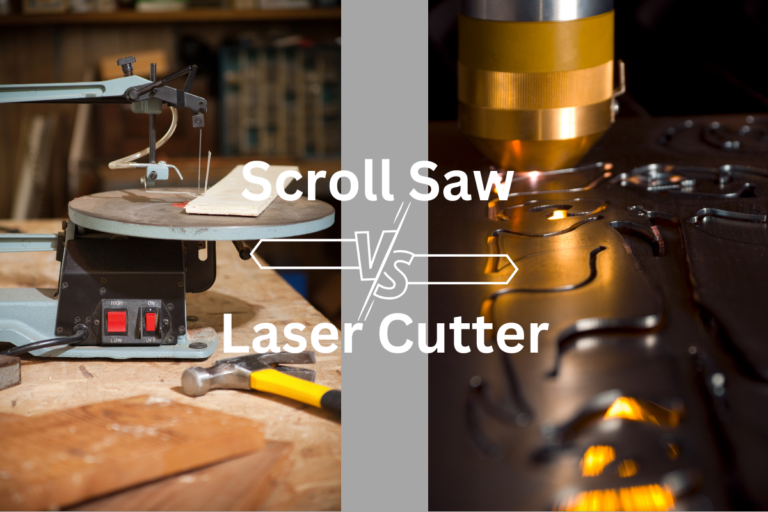Rip Hammer vs Framing Hammer – Which One You Should Choose?
As an Amazon Associate I earn from qualifying purchases.
When it comes to driving or pulling nails in or out of the woods, we recall hammers. To do that, a straight claw Rip hammer and Framing hammer are on the top. But they have differences that raise multiple questions.
A rip hammer is a small, balanced hammer with a flat strike head and flattened deep and long claws that are ideal for nail removal and light demolition work.
Whereas a framing hammer is a heavyweight and long-handled hammer that uses a milled strike head with a less deep and long claw, best for nailing and heavy-duty carpenter work and construction.
Let’s get a comparison between Rip hammer vs Framing hammer and explain their benefits and drawbacks so that you can pick one easily according to your project need.
Contents
Comparison table between Rip hammer and Framing hammer
| Features | Rip Hammer | Framing Hammer |
| Claw | Straight but little curve | Straight |
| Claw length | Small | Large |
| Design | Flatten | Straight |
| Shape | Slip | Thicker |
| Strike head | Narrow | Wide |
| Strike face | Milled/ flat | Flat |
| Head weight | Light | Heavy |
| Nail puller | Deep and large | Less deep and small |
| Nail driving | Slow | Fast |
| Handle | Small | Large |
| Weight distribution | More balanced | Balanced |
| Price | Affordable | Affordable |
Pros & Cons Compared to Rip hammer vs Framing hammer
Rip hammer
A rip hammer is a compact straight-claw hand tool with a flatter profile along the top which makes it best for small and large nail removal and light demolition work.
This is because it has a lightweight, easily grip-able handle and can be used for a wide range of framing, demolition, and rough carpentry tasks.
Framing hammer
Like the Rip hammer, a framing hammer has a straight claw, but a wide strike face makes it best for nailing. It is accurate and best for framing and heavy-duty carpentry tasks because it has a larger and heavier hammer face and a longer handle.
Differences between Framing hammer and Rip hammer
Claw Design
Framing hammers have a straight claw but are thin and small. In contrast, rip hammers have a straight claw with a bit of a curve and a deep claw that gives them more strength to pick the nail out of objects.
Handle Design
Ripping claw hammers typically have slim and straight handles, whereas framing hammers have thicker handles to ensure a comfortable grip on heavy-duty work.
Head weight
A rip hammer typically has a lighter head weight, usually between 16 to 25 ounces, which allows for more precision and control during demolition and removal work.
In contrast, a framing hammer has a heavier head weight, usually 22 to 32 ounces, which allows for applying more force while driving nails to make construction tasks easier and quicker.
Head and Claw length
Rip hammers have short claws and a narrower strike face than the framing hammer, which maximizes the chances of missing the target, but correctly practiced and hit, it minimizes the chance of damaging the object or the surrounding area.
On the other hand, for a long claw and a wide strike face, a framing hammer spreads out the force of the strike, reducing rebound and improving control.
Nail driving power
Framing hammers have more power for driving nails than rip hammers. The rip hammers are less weight and have narrow faces that need more strikes to drive nails, whereas the framing hammer needs only fewer strikes that shave time and energy.
Nail puller or nail slot
Rip hammers typically have a narrow and deep nail slot that is designed to provide a better grip on the nails to ensure precision and are best for nail removal. But for wider and shallower nail slots, a framing hammer ensures better leverage when removing nails.
Milled Face
The face of a framing hammer is milled, also called a checkered face, which means the striker side of the hammer will have cross-hatch or diagonal lines that ensure a secure grip while striking the nail.
On the other hand, rip hammer’s striker side is flat and doesn’t bless with this advantage.
Note: Some framing hammers are also available or have a flat striker side that gives the result like a rip hammer.
Head material
Rip hammerheads are usually made with forged, high-quality steel, which gives them durability and makes them not too heavy.
While framing hammers are usually made with steel or titanium, adding extra weight to handle heavy-duty nailing.
Handle material
Rip hammers often have a wood or fiberglass handle, whereas framing hammers may have steel or graphite handle for added durability.
Note: Model-to-model handle material varies.
Weight distribution
The weight of a rip hammer is more evenly distributed along its length as its length is shorter to pull nails easily, while the weight of a framing hammer is focused on the head for more power.
Nail size
Rip hammers are designed to handle smaller nails, while a framing hammer’s wide striker design can handle larger nails.
Purpose
Rip hammers are used for light demolition and nail removal work, while framing hammers are used for nailing and heavy demolition, building, and construction.
Price
Comparing both the rip hammer and framing hammer on different brands and platforms, a quality rip hammer will cost around $25 to $80. In contrast, a quality framing hammer will cost around $30 to $90.
Which One should I choose: Rip hammer or Framing hammer
As for my usage, the rip hammer is best for removing nails as they have narrow and deep nail pullers or V claws which pull out the small or large nails preciously. Also, as it is smaller for that, you will get better control over smaller and more detailed carpentry.
On the other hand, the framing hammer is best for nailing as it has a wider and heavier strike face and also a long handle to help hit the nail with more force to handle heavy-duty demolition work. In addition, though the claw has a less deep nail puller, its longer handle provides better leverage to remove deep-inserted nails.
If you are a full-time carpenter, I suggest you have both hammers, as one is better for nailing and one is better for removing nails. Furthermore, both are reasonably priced, and having both will expedite and simplify your work.
Frequently Asked Questions
What is the difference between rip hammer and claw?
The difference between a rip hammer and a claw can be seen to the naked eye as the rip hammer has a straight claw and heavier head, and longer handle for demolition work, whereas a claw hammer has a curved claw that provides extra leverage while pulling out nails also with a lighter head and shorter handle it do great finishing.
Which is the best hammer for carpenters?
As for my usage, claw hammers are the best for carpenters as they can be used for driving nails and pulling nails out. A carpenter can use straight and curve claw hammers, but the best one he can choose is the straight claw framing hammer.
It has a longer handle and heavier head to provide more leverage and easy nail driving and is great for prying apart pieces of wood.
Can you use a framing hammer for anything?
A framing hammer can be used for anything, such as framing, wood construction, and concrete formwork. But as framing can handle heavy-duty work with its heavier head and long handle, it can pull boards apart and easily pry out pieces of wood.
Conclusion
At an affordable price, both these straight claw Rip hammers and framing hammers are helpful hand tools for framing, wood construction, and concrete formwork, but for the structure or design, one is best for nailing and heavy carpentry, and one is best for pulling nails and light carpentry.
I hope I have discussed every possible perspective; now you have to choose which is preferable according to your project need. Thank you.





